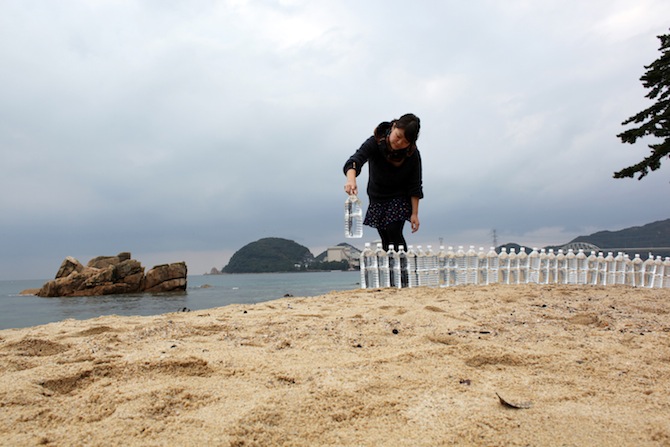 from the top: (1) Spirits Closing Their Eyes, Production stills, Galerie Eigen+Art, Leipzig 2014 © fischer/el sani and VG Bildkunst.
from the top: (1) Spirits Closing Their Eyes, Production stills, Galerie Eigen+Art, Leipzig 2014 © fischer/el sani and VG Bildkunst.
Nina Fischer and Maroan el Sani have been doing collaborative art works since 1995. While photographic and cinematic projects dominate their oeuvre, Nina and Maroan often travel to far destinations around the globe, investigating in the particular mood of the country. It is 'transitory places' that they seek to explore and to portray in their very own artistic language. The large three channel video installation "Spirits Closing Their Eyes" is the central (and the most recent) work in their currently solo show at Galerie Eigen+Art in Leipzig. Along several former photographic projects and videos, this piece portraits various Japanese inhabitants just after the nuclear catastrophe in Fukushima in 2011 and speaks both, a touching and a highly disturbing language. Far from being a classical documentary, this film creates an uncomfortable tension that causes the curiosity of how Nina Fischer and Maroan el Sani approach their projects. In an interview with artfridge, they talked about their experiences of the post-traumatic state in Japan, about resignation and politics, and about the aesthetic of their work.
Anna-Lena Werner: Nina und Maroan, you are currently exhibiting your newest video installation "Spirits Closing Their Eyes", which portraits various people in Japan after the nuclear disaster in Fukushima in 2011. You have talked to activists, scientists refugees, pupils, mothers – how did you prepare for the project, once you arrived?
Nina Fischer: The news about the earthquake in Japan on March 11 moved us a lot. We have many friends all over Japan, since we lived in Sapporo for 3 years and in Tokyo for several months as well. When we went to Japan in September 2011 for our residency at the Goethe Institute - Villa Kamogawa in Kyoto, we already knew, that this would be the subject. We didn't want to focus on the visible damages caused by the earthquake and the tsunami, nor on the reconstruction and cheer-up activities following the disaster. Instead, we were interested in non-descriptive and invisible changes with a particular focus on the current physical and psychological state of emergency, which oscillates between actual threat and subtle changes in everyday habits.
Anna-Lena: What affected you most?
Maroan el Sani: First, when we arrived in Japan, it seemed, nothing had changed. In Kyoto, especially as it is 500 km away from Fukushima, people were happily spending their free time sitting on the benches near river Kamogawa, cycling in the rain, drinking milk and eating fish. None of the restrictions, we remembered from Tschernobyl seemed to be on the agenda here. Yet, after taking a closer look, we realized that something had changed. We met young families, who were extremely concerned to find non polluted food for their kids. Students, who changed their subject to environmental approaches. Refugees from Fuksuhima, who settled in Kyotos outskirts in temporary apartments. Women with children and without husbands, who stayed at work in Fukushima. And we experienced a huge uncertainty about the future that was drawn into the community, in every aspect of their daily life.
Nina: Astonishingly, the closer we came to the disaster area, the less it seemed to have affected the people we talked to. This careless attitude might have been caused by daily reports from Japanese mass media, which were downsizing the danger of staying in the polluted area. So those inhabitants, who were insecure about leaving their homes, came to the conclusion that living with the threat of radiation can only work out by ignoring it to a certain point in daily live. This "half-live" of the human attention towards an invisible threat, such as from radiation, seems much shorter than the actual physical half-life of the becquerel. Towards Christmas 2011, the city government cancelled their public call for "saving electricity" and declared the catastrophe being under control and considered to be over. Christmas illumination was switched on and the mood of Tokyo’s inhabitants started to be more cheerful after a long summer of grief. The December tradition of "Bonenkai", meaning "drinking the sorrow of the year away and welcome the next", was blooming when we arrived and it seemed hard to find anyone who was still seriously worried!
Anna-Lena: In "Spirits Closing Their Eyes" each protagonist looks straight into the camera for one minute, while silently thinking about their future. What could you observe in their faces?
Nina: We always did the interview first, so the silent portrait is an aftermath of what has been said. It reflects their stories.
Anna-Lena: You drafted the question: How do the people in Japan see their future? Could you find an answer?
Maroan: Yes. It was obvious for us, that this "future" already went through different stages since March 2011: In autumn and winter 2011 people were extremely sad about the loss – about the deaths caused by the earthquake. They were shocked about the ongoing nuclear catastrophe, which seemed to be an inconceivable disaster that should never have happened and probably could have been avoided. They were sure that the consciousness about nature and the human condition would change – as if it was a last warning.
Nina: Up from 2012 this feeling was already fading. Things went back to normal. The new government didn't demand these changes on their agenda and a resignation started to spread. At the same time, we think that the consciousness of many people has changed a lot and they are looking for their own solutions on community basis. They try to move something.
Anna-Lena: Does the video's title suggest that the protagonists suppress their memories?
Nina: The title "Spirits Closing Their Eyes" has various readings. The inspiration for our title came from a Japanese artist, who is a friend of ours. After the catastrophe he told us that there are nature spirits or deities, inhabiting old trees, stones and temples. One has to treat them well, otherwise they would leave. When the tsunami blasted landscapes and cities, and the radiation from the damaged power plant polluted the area, all the spirits there have left. As they are very sensitive it won't be easy trying to get them to come back.
Anna-Lena: The overall aesthetic of "Spirits Closing Their Eyes" is extremely calm, sometimes disturbingly harmonious, only being frequently interrupted by the invisible threat of radiation. Also former photographic and scenic works of yours employ this strategy of invisible tension. What makes this strategy so interesting for you?
Maroan: Conceptually we have filmed this movie entirely as a series of "tableau vivants" with fixed camera positions. The camera is not an active and moving, but a static observer of the scene. It is about taking time to have a look at the landscapes, at the faces of the people and to listen to their stories they tell. What we are always interested in, is to build up a suspense in our movies, especially in moments of calmness. The tension stays underneath the visible surface, which is an allegory to the current atmosphere in Japan as well.
Anna-Lena: When you applied for a residency scholarship at the Goethe Institut in Japan, the Fukushima Daiichi nuclear disaster did not yet happen. Did you initially have another project in mind?
Nina: When we applied for the residency, we planned to continue our research about "in between spaces" – transitory places in Japan. But after the disaster happened, it turned out that all of Japan could be considered a transitory place. We usually come to new places without fixed projects. We always start by drifting through the places and try to learn from the scratch what is happening there in this specific moment. What are the crucial changes – what is in transition.
Anna-Lena: What is your next project?
Maroan: We are working right now on several new projects in Berlin, Italy, Greece and Brazil, which also apply to these questions. Our main focus is about the concept of ‘common ground’, which refers to mutual understanding, knowledge, beliefs and assumptions in urban and rural environments. We create experimental situations, to explore the boundaries of ‘common ground’, and focus on issues such as the uncanny, memory, community, tolerance, identity.
Nina Fischer / Maroan el Sani
Spirits Closing Their Eyes
11. January - 20. February 2014
Spinnereistraße 7. Halle 5.
D - 04179 Leipzig
Opening Hours: Tue-Sat, 11-18h
Upcoming events:
February 1st, 6pm
Screening of "I Live in Fear - After March 11"
Luru Kino, Leipzig
February 7 - February 23, 2014
6th Yebisu International Festival for Art & Alternative Visions
Metropolitan Museum of Photography, Tokyo
Feb 9, 2014, 11.30 Uhr
Symposium: "Beziehungsspiele: Nische vs. Mainstream. Das Verhältnis von Avantgarde und Medienindustrie", OCA Galerie, Berlin
March 7 - April 27, 2014
Minding my Own Business? - Fukushima in Berlin
Kunstraum Kreuzberg, Berlin

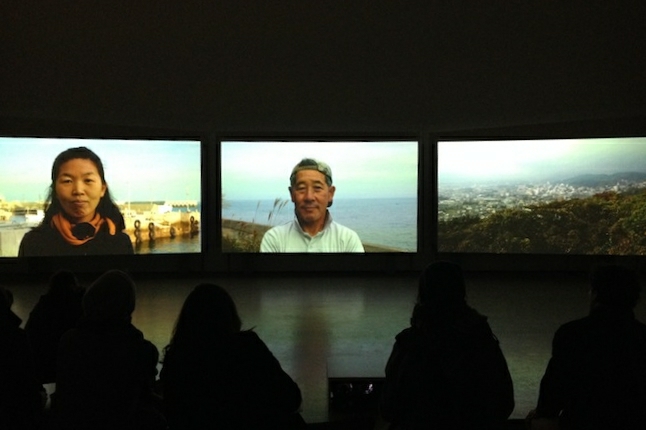
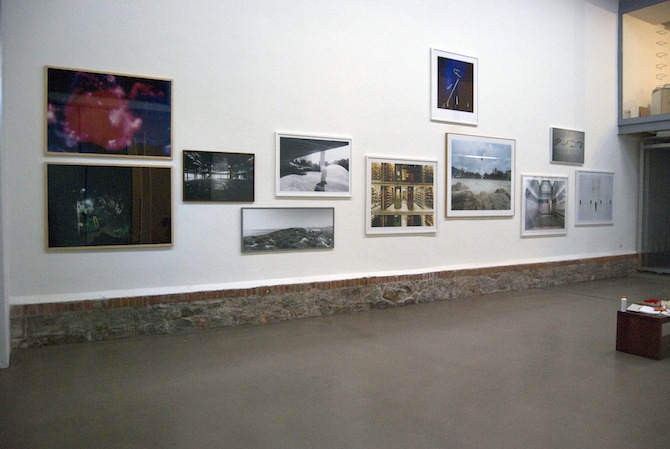
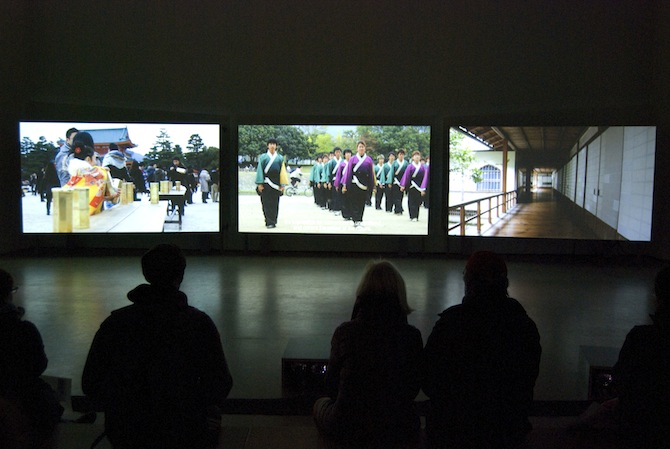
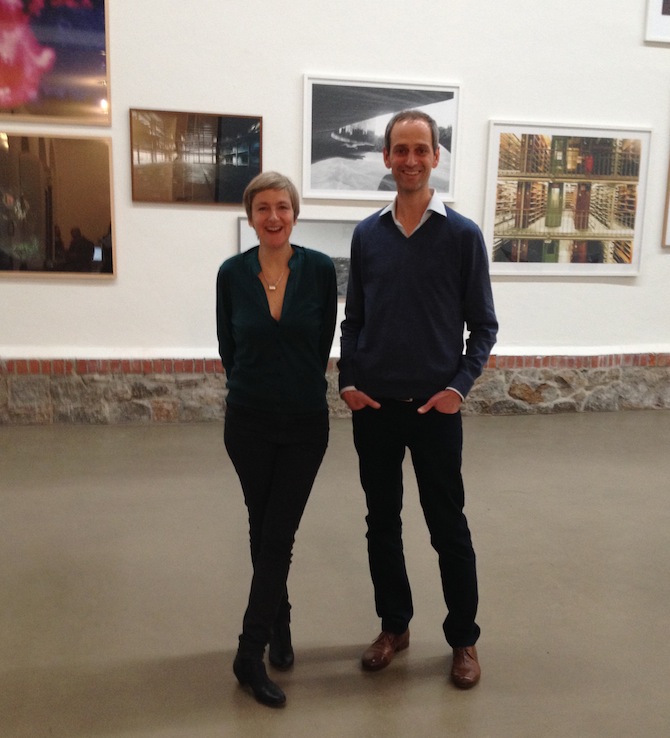 from the top: (1) Spirits Closing Their Eyes, Production stills, Galerie Eigen+Art, Leipzig 2014 / (2) Spirits Closing Their Eyes, Installation View, Galerie Eigen Art, Leipzig 2014, photo by artfridge / (3) Photo Works, Exhibition View, Galerie Eigen+Art, Leipzig 2014 (4) "Spirits Closing Their Eyes, Installation View, Galerie Eigen+Art, Leipzig 2014, Copyright: fischer/el sani and VG Bildkunst / (5) Nina Fischer and Maroan el Sani at Eigen+Art Leipzig, photo by artfridge
from the top: (1) Spirits Closing Their Eyes, Production stills, Galerie Eigen+Art, Leipzig 2014 / (2) Spirits Closing Their Eyes, Installation View, Galerie Eigen Art, Leipzig 2014, photo by artfridge / (3) Photo Works, Exhibition View, Galerie Eigen+Art, Leipzig 2014 (4) "Spirits Closing Their Eyes, Installation View, Galerie Eigen+Art, Leipzig 2014, Copyright: fischer/el sani and VG Bildkunst / (5) Nina Fischer and Maroan el Sani at Eigen+Art Leipzig, photo by artfridge